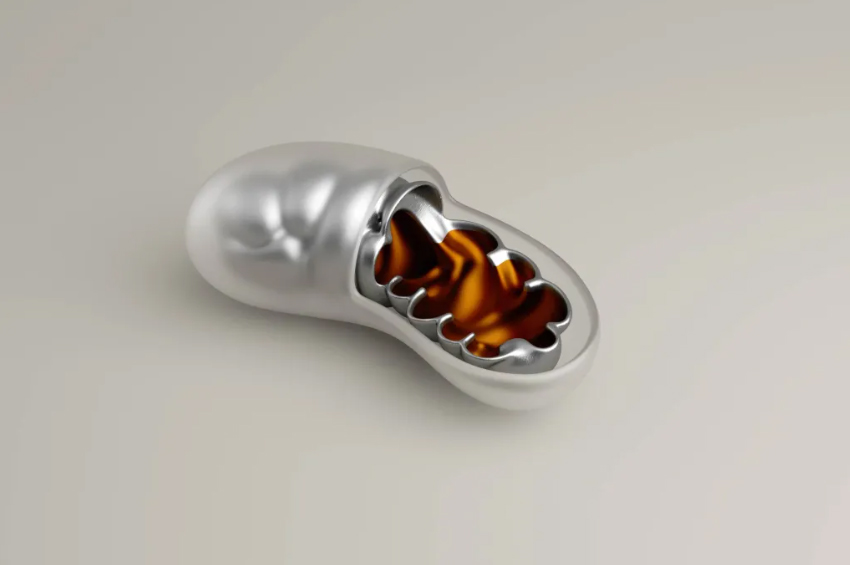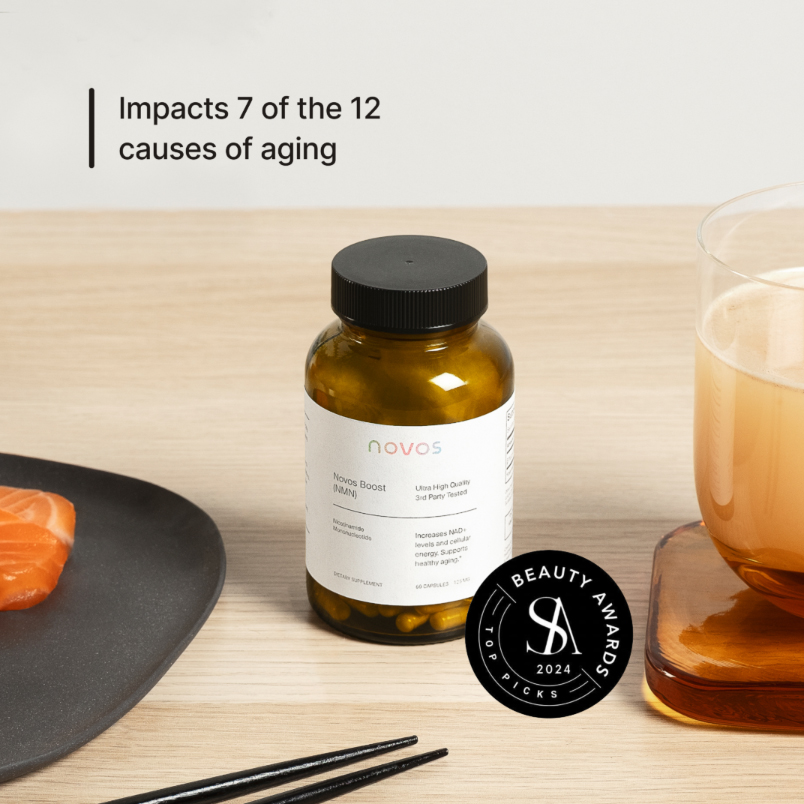
Table of Contents
Mitochondrial Dysfunction: A Key Driver of Aging
Aging is an intricate and multi-dimensional biological process shaped by multiple factors, one of the most critical being mitochondrial dysfunction. Mitochondria, commonly known as the cell’s power generators, are essential for generating energy and cellular metabolism. However, as we age, mitochondrial efficiency declines, contributing to various age-related diseases and functional decline. Understanding the underlying causes and impacts of mitochondrial dysfunction can provide valuable insights into anti-aging strategies and longevity interventions.

Book Your Free Consultation Today Or Call (647) 560-9233
By providing your phone number you agree to receive informational text messages from laserskin.ca. Consent is not a condition of purchase. Message frequency will vary. Msg & data rates may apply. Reply HELP for help or STOP to cancel.
The Role of Mitochondria in Aging
Mitochondria generate adenosine triphosphate (ATP), the cell’s primary energy currency. They generate ATP through oxidative phosphorylation, which involves the electron transport chain (ETC). This intricate process is essential for maintaining cellular function, supporting muscle strength, brain activity, and overall vitality.
However, mitochondria also generate reactive oxygen species (ROS) as a byproduct of energy production. While small amounts of ROS play a role in cell signalling and defence, excessive ROS can lead to oxidative damage, contributing to cellular aging and dysfunction. Over time, this oxidative stress affects mitochondrial DNA (mtDNA), leading to mutations, impaired function, and increased susceptibility to age-related diseases.
Causes of Mitochondrial Dysfunction
Several factors contribute to mitochondrial dysfunction with age, including:
1. Accumulation of Mitochondrial DNA Mutations
Mitochondrial DNA is more prone to damage than nuclear DNA because it lacks the protective histones and efficient repair mechanisms in the nucleus. Over time, mutations in mtDNA accumulate, leading to dysfunctional mitochondria that produce less ATP and more harmful byproducts. These mutations have been linked to various age-associated conditions, including neurodegenerative diseases, cardiovascular disorders, and metabolic syndromes.
2. Increased Oxidative Stress
As mentioned, ROS are generated as a byproduct of mitochondrial activity. While antioxidant defences can neutralize some ROS, aging reduces the efficiency of these defence systems. Excess ROS leads to oxidative damage to proteins, lipids, and DNA, exacerbating mitochondrial dysfunction. This cycle of oxidative stress and mitochondrial damage accelerates aging and contributes to chronic inflammation.
3. Impaired Mitochondrial Biogenesis
Mitochondrial biogenesis refers to the process of generating new mitochondria formed within cells. Key molecules such as PGC-1α (Peroxisome proliferator-activated receptor-gamma coactivator 1-alpha) regulate this process, crucial in maintaining mitochondrial health. With age, the activity of PGC-1α declines, leading to reduced mitochondrial numbers and compromised energy production.
4. Decline in NAD+ Levels
Nicotinamide adenine dinucleotide (NAD+) is a coenzyme essential for mitochondrial function and cellular energy metabolism. NAD+ levels naturally decline with age, impairing mitochondrial efficiency and reducing cells’ ability to repair damage. This decline is associated with metabolic disorders, muscle weakness, and cognitive decline. Supplementing with NAD+ precursors, such as nicotinamide mononucleotide (NMN), has shown promise in restoring mitochondrial function and slowing aging-related processes.
5. Dysfunctional Mitophagy
Mitophagy is the targeted breakdown of impaired mitochondria, ensuring that only healthy mitochondria remain functional. Mitophagy becomes less efficient as we age, allowing dysfunctional mitochondria to accumulate. This contributes to cellular senescence, a process where cells gradually lose their capacity to divide and perform their functions efficiently. Senescent cells secrete inflammatory molecules known as the senescence-associated secretory phenotype (SASP), further accelerating aging.
Consequences of Mitochondrial Dysfunction in Aging
Mitochondrial dysfunction has far-reaching effects on aging and health, influencing multiple systems in the body:
1. Neurodegeneration and Cognitive Decline
The brain is highly dependent on energy from mitochondria. As mitochondrial function declines, neurons become more vulnerable to oxidative stress and metabolic deficiencies, leading to disorders like Alzheimer’s, Parkinson’s, and general cognitive decline. Enhancing mitochondrial function through lifestyle and supplementation may help support brain health and reduce neurodegeneration.
2. Muscle Weakness and Frailty
Mitochondrial dysfunction is closely linked to sarcopenia, the age-related loss of muscle mass and strength. Reduced ATP production leads to impaired muscle function, making physical activity more challenging. This decline contributes to frailty, reduced mobility, and a higher likelihood of falls and injuries among older adults.
3. Cardiovascular Disease
The heart needs a continuous energy supply to function properly. Mitochondrial dysfunction in cardiac cells can lead to heart failure, hypertension, and other cardiovascular diseases. Mitochondrial efficiency can enhance heart function and reduce the risk of age-related cardiovascular complications.
4. Metabolic Disorders
Mitochondria are crucial in regulating metabolism, including insulin sensitivity and fat oxidation. Dysfunctional mitochondria contribute to metabolic disorders such as type 2 diabetes and obesity. Restoring mitochondrial function may improve metabolic health and support weight management.
5. Immune System Decline
Aging weakens the immune system, making the body more susceptible to infections and chronic diseases. Mitochondrial dysfunction impairs immune cell function, reducing the body’s ability to fight infections and control inflammation. Enhancing mitochondrial health can support a robust immune response and overall well-being.
Strategies to Improve Mitochondrial Function
Given the central role of mitochondria in aging, optimizing their function can promote longevity and vitality. Some effective strategies include:
1. Nutritional Interventions
- NAD+ Boosters: Supplements like NMN and NR (Nicotinamide Riboside) can help restore NAD+ levels, enhancing mitochondrial function.
- Coenzyme Q10 (CoQ10): Supports the electron transport chain and reduces oxidative stress.
- Resveratrol: Activates sirtuins, proteins involved in mitochondrial health and longevity.
- Alpha-lipoic acid: Functions as an antioxidant and promotes energy metabolism.
2. Exercise and Physical Activity
- Aerobic Exercise: Exercises like running, cycling, and swimming enhance mitochondrial biogenesis and efficiency.
- Resistance Training: Improves muscle function and mitochondrial density.
- High-Intensity Interval Training (HIIT): Stimulates mitochondrial adaptation and increases energy production.
3. Intermittent Fasting and Caloric Restriction
Fasting and reduced calorie intake can trigger mitophagy, removing damaged mitochondria and promoting cellular repair. These dietary approaches have been linked to increased lifespan and improved metabolic health.
4. Red Light Therapy
Red and near-infrared light therapy has been shown to enhance mitochondrial function by stimulating ATP production and reducing oxidative stress. This therapy has applications in muscle recovery, skin rejuvenation, and neuroprotection.
5. Stress Management and Sleep Optimization
Chronic stress and poor sleep impair mitochondrial function. Practices such as meditation, deep breathing, and quality sleep hygiene can support mitochondrial health and reduce aging-related damage.
Conclusion
Mitochondrial dysfunction is a central driver of aging, contributing to decreased energy production, increased oxidative stress, and susceptibility to age-related diseases. Understanding the mechanisms behind mitochondrial aging allows us to implement targeted interventions, including nutrition, exercise, fasting, and supplementation, to enhance longevity and overall health. By optimizing mitochondrial function, we can take proactive steps toward maintaining youthful energy, cognitive sharpness, and physical vitality as we age.
More info on NOVOR Core
More info on NOVOR Boost
